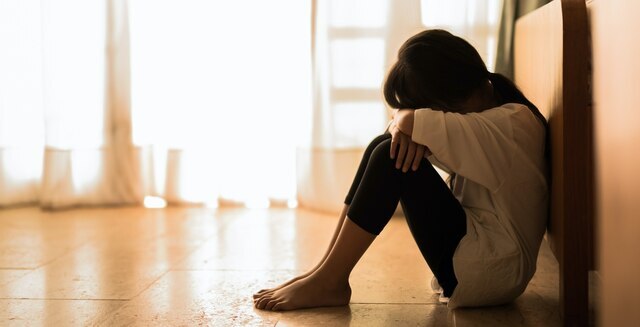Over one in three women and nearly one in four men have experienced sexual assault at some point in their lives, according to the CDC. About one in four girls and one in 13 boys experience sexual abuse at some point in childhood. The statistics are staggering, but we may feel paralyzed by our inexperience and unfamiliarity with the topic. But is it possible that, simply by mentioning it as something someone in the room may have encountered, we could aid in the healing of sexual abuse victims?
Sage Williams first felt a desire to advocate for victims of sexual abuse during her service as a full-time missionary. After her mission, she attended nursing school at BYU and worked as a research assistant studying sexual assault and the criminal justice system. She was trained as a victim's advocate and joined the Utah County rape crisis team. Immediately after graduation she was trained as a sexual assault nurse examiner. She received a master's degree in health policy at the London School of Economics, focusing her research and thesis on the role of religious leaders in health policy formulation and implementation. Together with Dr. Jennifer Wortham, the executive director of the initiative on health, religion, and spirituality at Harvard, Williams recently organized “Faith and Flourishing, Strategies for Preventing and Healing Child Sexual Abuse,” a symposium that was held at Harvard.
On this week’s episode of All In, host Morgan Jones spoke with Williams about how we as Church members can best create a space of healing and hope for victims of sexual abuse.
Listen to the full interview in the player below or by clicking here. You can also read a full transcript here.
The following excerpt has been edited for clarity.
Morgan Jones: Sage, I feel like this is something that we don't talk about a lot as Latter-day Saints. And I say that because in the past year, I've had a couple of friends who have been victims of sexual abuse who have asked me, "Do you know what resources are out there for members of the Church?" And there are resources; I don't want to act like there are not. But it's not something where the resources are easily found, and you kind of have to hunt for them—from my experience at least.So how do you think that we open this conversation, and is that helpful in creating a healing space for survivors of sexual abuse?
Sage Williams: Yes, this is such a great question and one that I think about all of the time because I care so much about members of the Church and, really, for anyone listening who has experienced sexual abuse. I care that they know that there is healing possible, and I want us to move towards really becoming a more supportive and healing community.
The first thing that comes to mind is exactly what you said: just to start talking about it. [We can] use the word "sexual abuse" in some of our conversation, in every opportunity we have both in the home and at Church. And there are a couple of maybe more simple ways that we can start including this in our conversation. The first is really to use our doctrine and our scriptures, and to connect those to lived experiences.
I actually really love the word religion because it comes from the Latin word re-ligare, which is ligate, which means to connect it together. And so the purpose of religion is to connect all things together. To bring doctrine and life experience together to help us better live this mortal life. For example, if someone is maybe teaching a lesson about Christ's healing power, they could include talking about how sexual assault survivors can find healing through Jesus Christ in the same way that Jesus Christ has the power to heal us from loss or from physical ailment or any other mortal experience that we have.
Any time we're talking about our baptismal covenants to mourn with those who mourn and comfort those who stand in need of comfort, we can include a conversation about how to listen to people who have experienced sexual assault. Really just listening to them, feeling the grief and the pain, and just sitting there with them is a way to really keep that covenant. [Another example is ] Jesus Christ, we know, is the perfect advocate. And so when we're talking about Him and His role as an advocate, we can talk about how we can follow His example and advocate for vulnerable populations.
And when you talked about “Does it make a difference?”—it does. Just saying the words creates a healing environment. [If] a teacher brings up sexual assault and carefully shares their testimony about how healing is possible, for a survivor that immediately sends a message to them that they're welcome here, that this is a safe place, and that this is a community that supports them.
Very quickly, the other thing I thought of was that teachers—Young Women leaders, Young Men leaders, parents—should keep in mind that because of the statistics, if there's five people or 10 people in your Young Men's class, the likelihood that someone has experienced sexual abuse is really high. So if you're teaching a lesson about the law of chastity, just including a little note of, "If anyone here has experienced sexual abuse, or if any of your friends have experienced it, just know and remember that that's not your fault. And this is something that you can heal from, and I'm here to listen or to provide support." So I think just talking about it, sometimes it's hard and it's uncomfortable, but if we can just start by saying the words, it sends a really clear message that this is something we care about, and we want to help.

